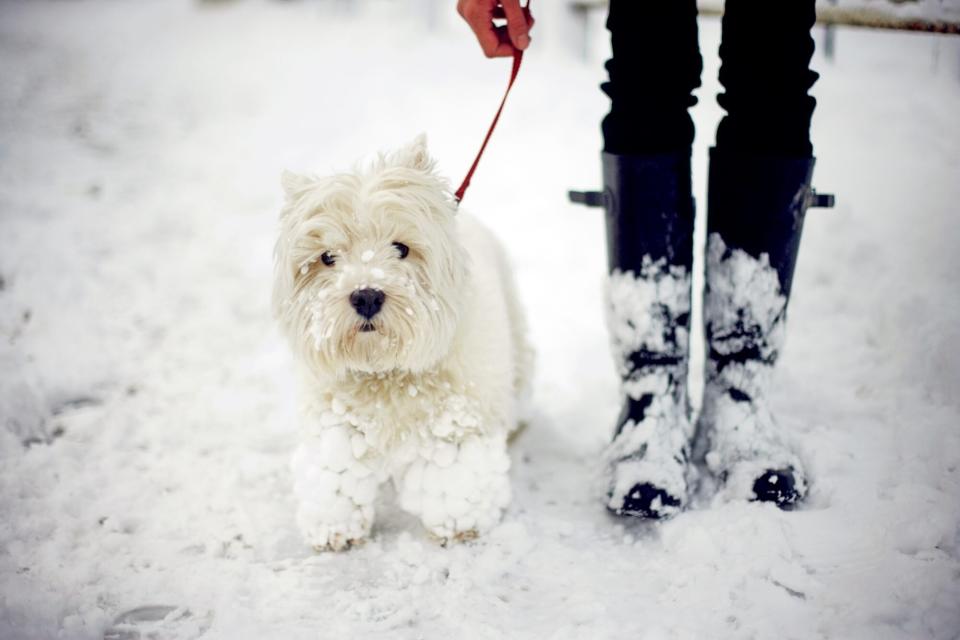How to Get Snowballs and Ice Off Your Dog's Paws
The world has turned white with fallen snow. When you open the door to the winter wonderland, some dogs will look at you like you're crazy: I have to go out in that? You'll need to coax them out for a quick potty break (maybe on the porch or the grass hidden under eaves), then usher them right back in.
But if you've got a dog who loves the snow, running, bouncing, and jumping around, you need to know about the effects of long walks or play sessions in the snow on your dog's feet.
Can Dogs Go for Walks in the Snow?
The average, healthy dog can play in the snow, walk and run in the snow—even safely eat snow (as long as it's not contaminated)—according to Andy Rollo, DVM, a veterinarian and co-owner of Madison Veterinary Hospital and Walnut Lake Animal Hospital in the suburbs of Detroit, which sees some snow every winter.
"Dogs' pads and feet are made for the cold, so it really isn't even necessary to put booties or protection on their feet," Rollo says.
If the temperature drops below 0 degrees Fahrenheit, however, Rollo says you should limit outside snow time: "[At those temperatures,] the dogs should have limited time outside to just do their business."
Each dog is different, however. Some dog breeds are made for cold climates with their big, thick winter coats, while other dogs have thin layers of fur. And most dogs who spend summers and winters with you inside your air-conditioned and well-heated home are used to mild temperatures—just like you. Your dog might need extra layers or protection.
Your dog also needs your help to watch out for any signs of hypothermia or frostbite, which can include:
Shivering
Whining
Curling up
Pale gums
Cold feet, tail, and ears
Change in skin color
How to Protect Dogs' Paws in the Snow
If your dog has trouble walking in slippery snow or hurts her feet on ice, outdoor doggie wear might be the ticket, according to Rollo. There are cute and effective snow shoes and boots, stylish and warm snow hats, snug winter jackets and coats and other gear to choose from.
"Dog snow boots or booties might make sense on a case-by-case basis, say with a dog that keeps cutting her feet on ice, or an older dog with arthritis who has a hard time getting traction in the snow and ice," he says.
A little Vaseline or paw balms made just for dogs can help soothe and protect foot pads that get dry and cracked in the winter. Don't let perpetually cracked paws go too long without a visit to the veterinarian, however, as paws can get infected or be a sign of other medical conditions.

Tim Robberts / Getty Whether going on a long walk or strenuous hike, your Westie will want to be right by your side.
Cleaning Snow and Ice From Dog Paws
If you're wondering the best way to get packed snow off your dog's paws and off your dog's fur, it's easy, says Renee Schmid, DVM, DABVT, DABT, a veterinarian toxicologist who works with Pet Poison Helpline.
"Just wipe it off with a towel," Schmid says, "and allow the snow to melt."
Be extra thorough in your wiping if you think some of that snow or ice might have been mixed with unsafe ice melts or other toxins that can get caked onto your dog's paws after a run in the snow. A dog paw washer can also help with getting rid of harmful substances.
Now go enjoy your snow day. Your dog can too!

